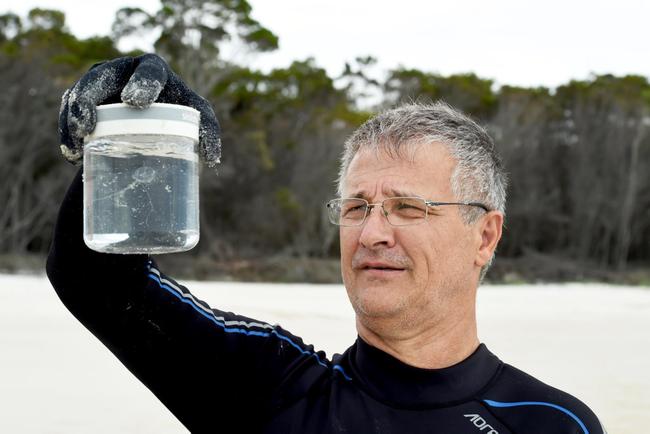Irukandji symptoms and what you need to do if stung
WHEN it comes to first aid for stingers Hervey Bay's Glen Bowman has plenty of experience under his belt.
Fraser Coast
Don't miss out on the headlines from Fraser Coast. Followed categories will be added to My News.
WHEN it comes to first aid for stingers Hervey Bay's Glen Bowman has plenty of experience under his belt.
He has 30 years of first aid experience and is a qualified medical technician and dive instructor.
When working in Yeppoon as a paramedic about seven years ago, Mr Bowman regularly managed Irukandji syndrome.
FRASER COAST TOP STORIES
1. Hottest day in 30 years predicted on Fraser Coast
2. 'This can lead to a loss of vehicle control': 4WD's recalled
3. M'boro man, 61, killed in crash at Dundathu
Mr Bowman said there are offshore and onshore varieties.
"Irukandji affects people differently - there are mild symptoms like goose bumps and feeling unwell and joint paint right through to having a crisis with life-threatening symptoms which can include a massive rise in blood pressure," he said.

Mr Bowman said some symptoms can be gradual and the severity of the sting depended on if the Irukandji had used the venom to paralyse previous prey or not.
"If the creature has used the venom to paralyse prey the venom won't be as catastrophic as opposed to a fully charged irukanji that hasn't used venom on a previous prey," Mr Bowman said.
He also explained that those who are fit and healthy wouldn't be as likely to suffer as severely.
Mr Bowman said as a diver it was important to wear protective clothing and this would be a precaution for swimmers if they're concerned.
"Don't panic, if in doubt wear protective clothing and take your vinegar with you," he said.
Mr Bowman said the vinegar deactivates the stinging cells but won't do anything for the pain of the sting.
"There is nothing much you can do for the pain first aid wise - you need to call an ambulance," he said.
Mr Bowman explained that a cool compress would act in relieving the pain to some extent.
FIRST AID
Irukandji - Irrigate sting with vinegar for up to 30 seconds, call an ambulance.
Box shape jellyfish - flush off the tentacles with vinegar. If in doubt call an ambulance.
Round shaped jellyfish - Copious amounts of sea water to flush off the tentacles. For some a warm compress may help but if that doesn't work try a cool compress. If in doubt call an ambulance.
Unknown severe marine sting - if in doubt use vinegar.


